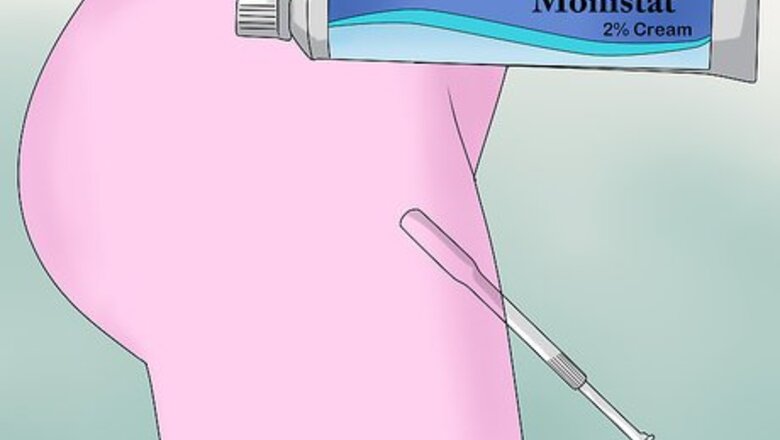
views
Insert a vaginal suppository to treat the condition.
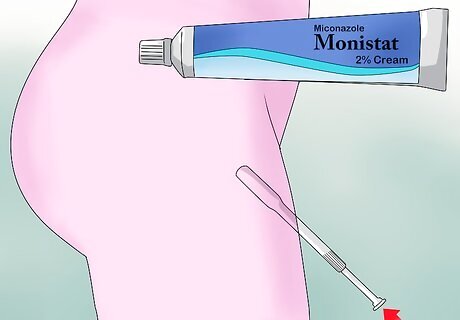
Use a special applicator to insert a suppository designed for vaginal thrush. Lie down on your back with your knees bent. Put the pill on the end of the applicator and insert it into your vagina. Push it in as far as it will go without being uncomfortable. Use the plunger on the applicator to release the pill. Some common suppository products are Miconazole (Monistat) 2% cream or a 100 mg vaginal suppository. The CDC recommends using these medications every night at bedtime for 7-14 days. This might feel a little uncomfortable, but it shouldn't hurt! Always read the directions on your medication before using it, as they may be slightly different from one medication to another. You can get vaginal suppositories (or pessaries) over the counter at your local drug store. Treating the condition will help the itching go down. Wear old underwear when using a suppository, as the pill will melt and may leak.
Apply an intravaginal cream as an alternative.
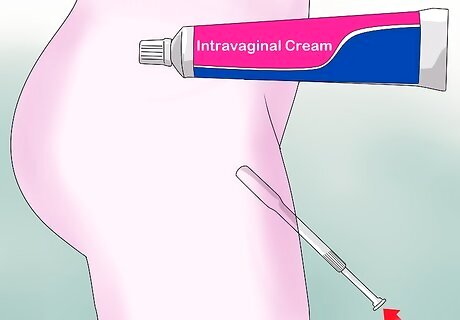
Apply this every night at bedtime for up to a week. Fill the applicator with cream, if it's not prefilled, by squeezing the medication into the applicator. Lie down on your back with your knees bent. Push the applicator into your vagina, only pushing as far as it's comfortable. Squeeze the medication out of the applicator by pressing down on the plunger. Find intravaginal anti-fungal creams at your local drugstore. They'll help with the itching. Read the directions on the package before using. Never reuse an applicator.
Take an oral medication if your doctor recommends it.
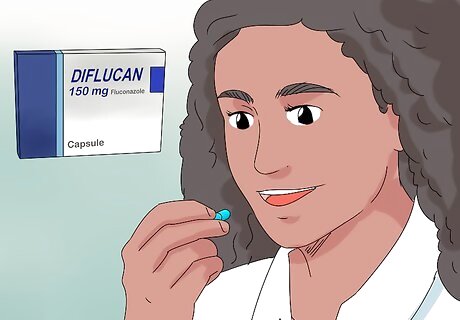
An oral medication is an alternative for a suppository or cream. Your doctor may prescribe a single 150 mg dose of fluconazole (Diflucan), or something similar. Follow your doctor’s directions for using any oral medications carefully. Let your doctor know if you are pregnant or nursing before taking any oral medication for thrush, since these medications may not be safe for your baby.
Refrain from having sex while using an anti-fungal treatment.
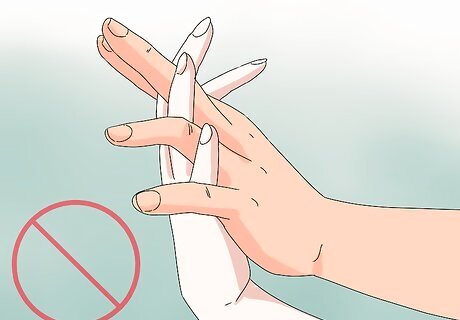
These treatments can make condoms and diaphragms less effective. To make sure you're still practicing safe sex, wait until the treatment is over and your symptoms subside before having sex again. It's better to be safe than sorry! Plus, the friction from having sex can make your thrush worse.
Apply an external skin cream to the area.
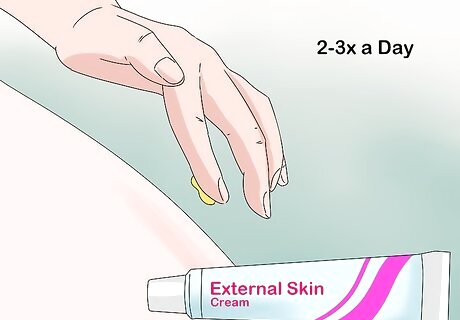
This is a less invasive treatment option. Look for anti-fungal creams meant to treat yeast infections at your local pharmacy. Use them 2-3 times a day on the affected area for up to 2 weeks. You can apply these to your labia (the lips outside your vagina) but don't insert them into your vagina. For people with penises, rub the cream over the testicles, penis, and foreskin, if you still have yours. You can also use this on your nipples, in your armpits, or between your fingers or toes.
Ask your doctor for an anti-fungal oral medication.
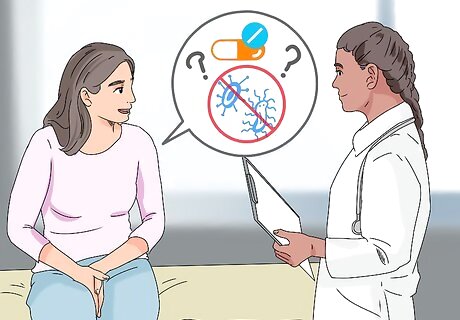
This helps reduce itching quickly. These medications treat the thrush infection from within, and they can work on the groin area, your anus, or your nipples or breast area, as well as your armpits and between your fingers. Call or see your doctor if you want a prescription for one of these. Often, it will only take 1-2 doses to treat the infection. In some countries, such as the U.K., you can purchase some of these medications over the counter. However, in the U.S., you must always have a prescription.
Use a grease- or oil-based moisturizer to relieve symptoms.
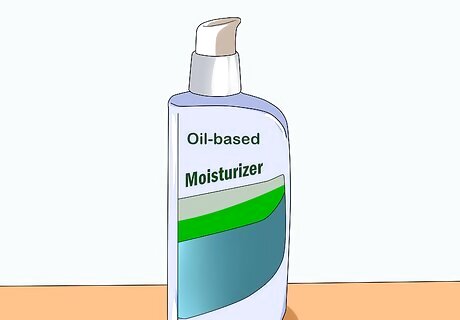
You can use these moisturizers on your clean anus, groin area, armpits, nipples, fingers, or toes. Try using them several times a day, and it may help relieve symptoms. You can try a zinc oxide treatment like Desitin or Balmex. You can even just use petroleum jelly. Other options include creams like Nivea Daily Essentials Sensitive Night Cream or Neutrogena Fragrance-Free Hand Cream. These moisturizers can also help prevent thrush.
See your doctor if your symptoms continue.
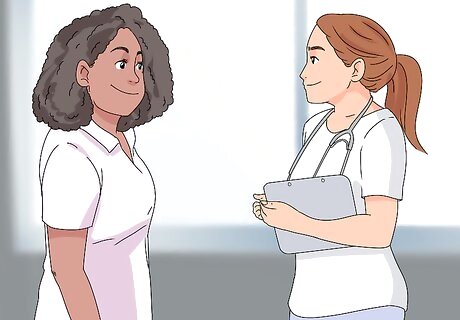
Call your doctor if you have symptoms more than 2 weeks or if they keep coming back. You may need a different kind of treatment to cure the yeast infection. Also, itching around the anus can come from several other conditions, such as hemorrhoids, so it's a good idea to have the area checked by a doctor.
Apply or eat yogurt with Lactobacillus acidophilus in it.
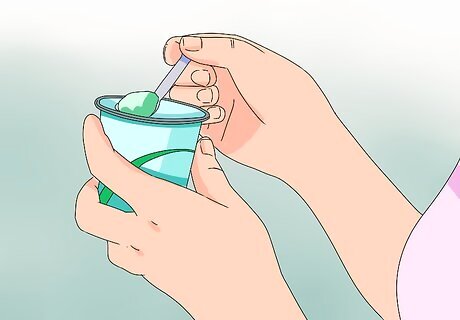
This is a good bacteria that may help restore the proper balance to the affected area. You can apply 1 tablespoon (15 mL) to your vagina with an applicator like you do other internal creams, or you can simply consume more yogurt. Look for plain yogurt that states it has "live cultures" in it. Consuming this type of yogurt daily may help as well. You can also apply yogurt to other parts of your body as needed, such as in your armpits, between your fingers or toes, or in your groin area.
Choose loose, breathable undergarments and clothing.
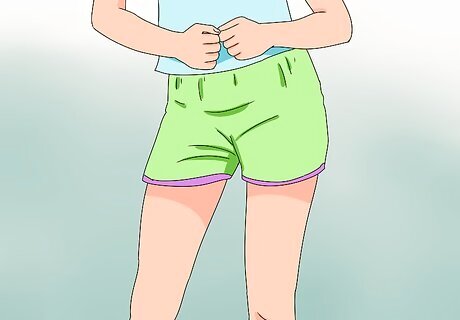
Looser-fitting underwear allows moisture to escape, keeping the area dry. Avoid anything too tight, such as pantyhose or tummy-control underwear, which will trap moisture. Also, avoid clothing that fits too tightly under your armpits, as that could lock in moisture in another potential thrush area. Also, opt for cotton, as it allows more air through than other fabrics. Avoid nylon and other clingy synthetic fabrics, which are constricting and can trap moisture. Wear pants that fit loosely and comfortably, since tight pants can trap moisture and restrict air flow. Make sure to change your underwear every day.
Change out of wet bathing suits as quickly as possible.
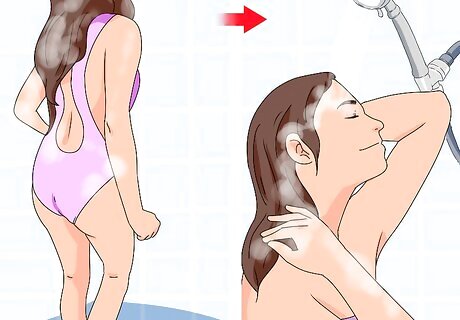
A wet swimsuit traps heat and moisture against your body. Unfortunately, this promotes the growth of yeast and bacteria. The pool chemicals can also imbalance your body’s natural pH, potentially leading to yeast overgrowth. It’s also important to change and rinse off after exercising or doing any other activity that causes you to break a sweat.
Launder your undergarments in hot water with a mild soap.
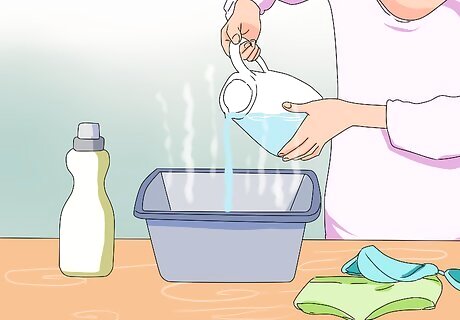
This helps kill off the fungus. Skip laundry detergent with fragrances and instead pick ones that are made for sensitive skin. Fragrances can irritate the area further, making itching worse. Set your washing machine to rinse twice, as that will help rinse out any irritants.
Wash the affected area once a day with a mild soap.

Mild soaps will irritate the sensitive skin less than stronger soaps. Try to choose soaps that are fragrance-free. Also, opt for ones that are labeled for sensitive skin or are traditionally considered mild. Clean the area with the soap and warm water. Pat the area dry to avoid irritating it more.
Wipe from front to back when going to the bathroom.
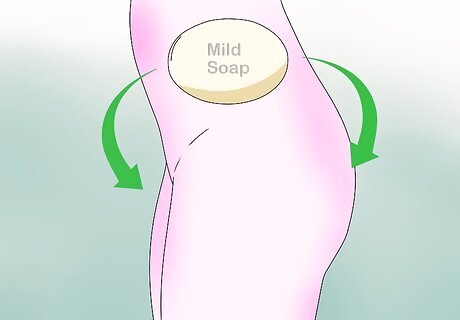
Wiping from back to front isn’t as sanitary. If you wipe this way, you're more likely to get thrush in your vagina or around your penis. Always move from front to back when wiping. Similarly, never have anal sex and then vaginal sex without washing the penis or changing condoms in between.
Stay away from vaginal sprays and douches.
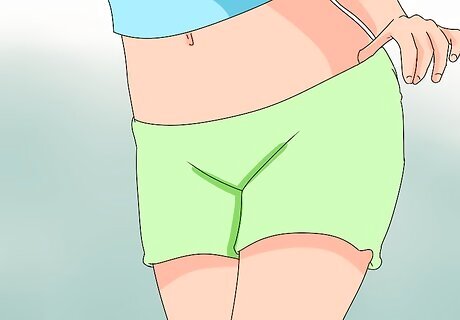
Most of the time, these make the situation worse. In fact, they can lead to yeast infections by upsetting the balance of your vaginal area. It's best to avoid them altogether. Similarly, if you have thrush under your arms, you may want to try a natural deodorant without fragrance to avoid irritating it further. If you get thrush between your fingers, try using creams that don't have fragrance.


















Comments
0 comment